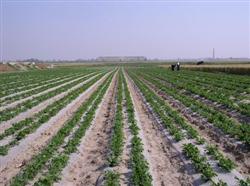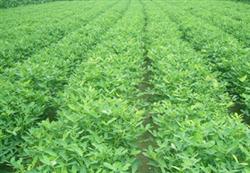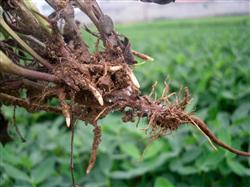What measures should be taken to achieve high yield of summer peanuts?

Summer peanut mostly refers to wheat stubble peanut, its growth period is 30-40 days shorter than that of spring peanut, and each growth period is shortened accordingly. The rapid growth in the early and middle stage and the low temperature in the later stage are disadvantageous to the development of pods. Therefore, the following measures should be taken. (1) early-maturing and high-yielding varieties were selected. (2) early broadcast in the rush time. Early sowing is the key to determine the high yield of summer peanuts. (3) early application and increase of nitrogen and phosphorus fertilizer. The growth period of summer peanut is short, when sowing, in addition to the application of organic fertilizer, 1015kg of nitrogen fertilizer and 2550kg of phosphorus fertilizer are applied per mu. (4) preserve the seedling and increase the density. The summer peanut plant is short, so it is necessary to make full use of soil fertility and light energy to increase the yield of the population, and the planting density should be 10% higher than that of spring sowing. (5) timely ploughing and weeding. Summer peanuts are in the season of high temperature and more Rain Water, it is easy to grow weeds, and the soil is easy to harden after rain. Therefore, it is necessary to plough weeds and loosen the soil in time.
- Prev

Topdressing Technology of Summer Peanut
Fertilizing should achieve "two pursuits, one spray and four supplements". Specifically: two topdressing, that is, the first topdressing in front of peanut clumps as early as possible, the amount of fertilizer applied is 10 kg of urea, 15 kg of diamine and 10 kg of potassium chloride; the second topdressing is at the beginning of the expansion period of young fruit, and 10 kg of urea is applied per mu. As soon as it is sprayed, it will be in the late growth period.
- Next

How to identify peanut root rot?
The incidence of peanut root rot is the most serious in the flowering and fruiting period. It mainly harms the root of peanut. After peanut infection, there were yellowish-brown infiltrating disease spots in the root neck, and then the disease gradually became dark brown. The main root of the diseased plant is wet-rotted, the root cortex turns brown and rotten, it is easy to peel off, there is no lateral root, or the lateral root is few and short, and the main root is like a rat tail.
Related
- The first cup of black tea in spring, the flavor and history of tea gardens in Kenya, Africa
- The computer can not only choose potatoes, but also grow tea rice. AI will grow winter oolong tea champion.
- It is not only the inflated tea bitten by insects, but also engraved with the four seasons tea in Beipu.
- The Oriental Beauty Tea Festival in Zhuxian County takes the stage at the weekend to experience the plus-size feast of oil tea.
- & quot; Oriental Beauty Tea & Exploration of Emei in Hsinchu, the hometown of quot;
- The new variety of strawberry "Tainong 1" dessert is the first choice with mellow aroma. Crimson gorgeous
- History of Tea in Taiwan: from Wild Inner Mountain to Export Tea Garden
- Two types of Taiwan Oriental Beauty Black Tea won the British three-Star Award for Childhood Tea Xiang Zhang Jiaqi changed from pilot to champion tea maker.
- Banana species and varieties: the planting history of Taiwan Xianren banana and dwarf banana is long, is banana disease resistant?
- Coffee planting Technology: Qianjie Coffee from Seedling to harvesting

